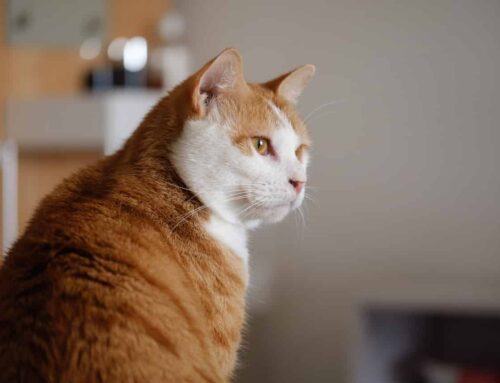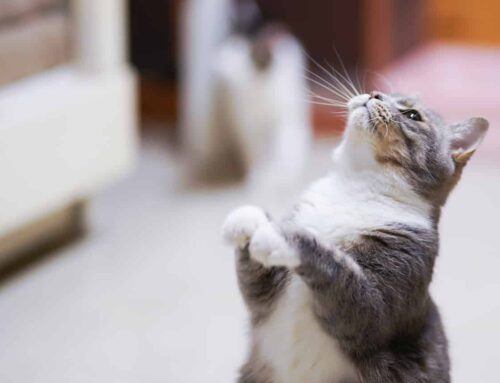Do you know our pet cat’s body cold knowledge? Cats are amazing pets, cats have a lot of cat’s body cold knowledge that you don’t know, for example, a cat’s nose has 14 times the sense of smell than a human’s, a cat’s whiskers fall naturally and can be navigated, let’s do it together Explore the cat’s body cold knowledge .
Cat’s body cold knowledge: Nose
1. Cats are carnivores, sub-felines. Its sense of smell is 14 times higher than that of humans, and it is the most commonly used and most important sensory system for cats.
2. Cats are basically in a world dominated by their sense of smell. They have a major olfactory detection organ, called the pear nose organ, which is particularly sensitive to nitrogen compounds. It can distinguish the smell of nitrogen very quickly, and can prevent itself from eating spoiled food.
3. The nose should be dry when the cat sleeps, and moist during normal activities and play.
Catnip cat toys, which is often used to indulge cats, attracts cats because the substance in it is very similar to the smell emanating from mother cat urine. At the same time, there are many cat grasses that cats can’t put it down.
Cat’s body cold knowledge: Eyes
①Cat is a kind of animal with strong nocturnal ability, and its field of vision is about 220 degrees. Cats usually sleep during the day and wake up at night to hunt for food. Cats’ eyes can sense very weak light, and at night, the pupils generally dilate and reflect fluorescent colors. (Only Siamese cats generally reflect red light)
Little knowledge: Cats in the wild mainly catch rodents in the evening and birds in the morning
② Cats are most excited in the early morning. When the sun rises, or the light becomes larger, the cat’s pupils will narrow into a thin slit to avoid the discomfort caused by the light to the eyes.
③ Generally, kittens are born with blue eyes. Of course, when kittens are just born, their eyes are closed, and they will open in about ten days. As they grow up, the color of the eyes will be fixed and become a genetic color.
④ Cats are born with short-sightedness. They cannot see things within 20 centimeters clearly. They can only see objects from 20 centimeters to a few meters. And cats are not completely colorblind, generally blue, green, yellow can distinguish, but can not distinguish red. In addition, cats are very good at catching moving objects.
Cat’s body cold knowledge: Whiskers
①A cat’s whiskers are of great significance. The average cat has a total of 24 whiskers, which are 2 times thicker than the cat’s coat and 3 times deeper into the hair follicle.
② Cats use whiskers to feel the surrounding environment and play a role in navigation. The sensitive nerve endings in the whiskers allow cats to quickly resist strong winds, close their eyes to protect themselves, and also play a role in sensing food and prey.
③ Cats don’t like things sticking to their whiskers. So try to choose a larger basin, and don’t let the cat’s whiskers get wet.
④ When the cat is in a good mood, the whiskers generally fall naturally, and when they are nervous, they are flat on the face, and when they fight, they will obviously blow their beards and stare, and the whiskers will stand up.
⑤ The cat’s whiskers will fall off naturally and continue to grow, so owners don’t have to worry too much. The mother cat will also lick the face of the kitten, and it is not a big problem to lick the whiskers off with too much force.
Cat’s body cold knowledge: Teeth
① Adult cats have a total of 30 teeth, which are used for different purposes.
② The incisors are generally used to connect food and comb the hair with the tongue to connect the parasites and other debris in the skin. The canine teeth are sharp for hunting, and the molars are used for tearing food. Therefore, cats are typical swallowing animals. They swallow food completely. In order to better absorb it in their own intestines, they will choose to tear food to a size that can be swallowed. In addition, cats have split teeth, and the so-called split teeth are also one of the typical characteristics of cats. Cleft teeth consist of the last premolar in the upper jaw and the last molar in the lower jaw. The formation of the teeth allows cats to bite into mouth-sized pieces of meat from large pieces, often with their heads tilted to one side during the chewing process.
③ There are some bacteria in the cat’s mouth that can cause infection, which is why cat scratch fever occurs frequently. So if you are bitten by a cat, you must treat the wound quickly.
④The three invisible killers of middle-aged and elderly cats: dental calculus, obesity, and kidney disease. Small calculus also constitutes the culprit of many diseases. Oral hygiene prevention is greater than treatment. It is difficult for cats to brush their teeth and is generally difficult to complete. Therefore, mouthwash, Boladan, and some oral cleaning products are very important for cats. Very important.
Cat’s body cold knowledge: Hearing
① Cats are very sensitive to hearing, five times that of humans and five times that of dogs; vacuum cleaners, construction noise, and firecrackers will make cats very nervous, which is very harmful to cats with heart disease.
②The cat’s external auricle is relatively large, controlled by 32 muscles, which can rotate 180 degrees and listen to small movements.
③The angle of the cat’s ears is also an indicator of emotion.
Cat’s body cold knowledge: Skeleton
①Cat is a loner, and it is not easy to feel lonely. In the cat’s life, no matter the behavior of hunting and climbing, it needs very good agility. For example, the cat’s bouncing force is 5 times its own height. The bones of cats are very soft, which is the most critical factor for cats to complete agile movements.
②The average cat has 250 bones in its body. (It is reported that cats have 240 bones, and male cats have one more penis bone than female cats.) If Scottish Fold cats are not bred scientifically, there will be some skeletal diseases, especially the tail, which is very stiff, and some genetic problems.
③The cat’s explosive running speed can reach 48 kilometers per hour, but it is not a predator with very good endurance.
Limbs
①The cat uses its tail to balance the direction when walking. It walks with great precision and will surely follow its front feet with its back feet. Cats have 5 toes on the front paws and 4 toes on the back paws, and have sweat glands that allow the soles of the feet to perspire. (In addition, the soles of cats will release unfriendly pheromones, which will then be marked in some places)
② Cats have flexible claws, which are generally set in the fur and do not stick out. When the owner provides the cat scratching board, it must be placed horizontally to correct the cat’s scratching habit. Because cats in the wild are accustomed to scratching upward, for the safety of furniture and wallpaper in the home, they should be corrected and guided slowly. (It’s natural for cats to grind their claws, it can’t be corrected)
③ Some very cute actions of cats, such as stepping on milk, stepping on the quilt, etc., are a habit developed in the kitten period in order to eat more milk.
Tail
①The cat’s tail is mainly used to assist balance, so that the cat can walk in a narrow area, and it also allows the cat to maintain balance without slowing down when moving quickly.
②The tail plays a certain role in conveying emotions. Cats can also use their tails to understand each other’s emotions.




